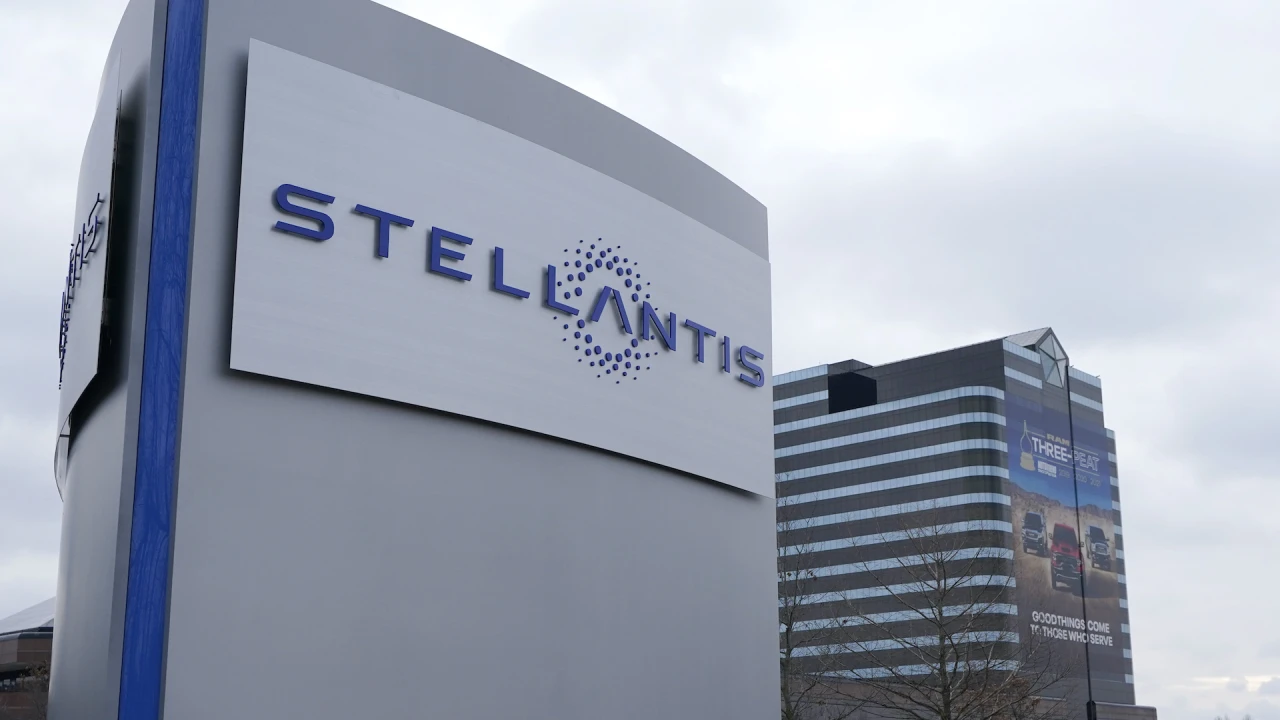Stellantis to invest $406 million in Michigan factories to build EVs
Jeep and Ram maker Stellantis will spend $406 million retooling three Michigan factories so they can build electric vehicles or battery parts to support a strategy of making vehicles powered by both gasoline and batteries. With its investment announcement Wednesday, the company is taking a step toward meeting some commitments that it agreed to in a new contract ratified last fall by the United Auto Workers union after a bitter six-week strike. It’s aimed at countering union arguments that Stellantis won’t keep commitments and doesn’t want to invest in U.S. factories. An assembly plant in Sterling Heights, Michigan, north of Detroit, will get the bulk of the investment, $235.5 million, so it can make the battery-powered Ram 1500 pickup truck that will go into production later this year. The plant, which has been singled out by CEO Carlos Tavares for criticism due to quality problems, also will make a full-size electric pickup with a range-extending gas-powered generator. In the union contract, which runs through April of 2028, the company agreed to invest $1.4 billion at the Sterling Heights plant. Stellantis also said it will sink about $97.6 million into the Warren Truck Plant, also north of Detroit, so it can build electric versions of the Jeep Wagoneer large SUV, one of four Jeep EVs scheduled to be produced globally by the end of next year. The company promised in the union contract that Warren Truck would get roughly $600 million of investment. An engine factory in Dundee, Michigan, southwest of Detroit, will get over $73 million so it can assemble, weld and test battery trays for future EVs, as well as make front and rear beams for large vehicles. Battery tray production will start this year, and the beams in 2026, Stellantis said in a statement. The Dundee factory is supposed to get $770 million, according to the contract. Union President Shawn Fain has threatened to strike the company over delays in its commitment in the contract to reopen the shuttered assembly plant in Belvidere, Illinois, in 2027, and open a new battery plant there in 2028. At stake are more than 2,700 jobs. But the company, which has reported poor sales and earnings this year, has delayed the reopening given what it calls unfavorable “market conditions.” Stellantis says it will eventually meet its commitment to reopen the plant. Yet no date has been given for the company to restart the factory or to open a new battery plant and a new parts warehouse, both which were also promised in the contract agreement that ended the UAW’s strike against Stellantis last year. At stake are more than 2,700 jobs. A union spokesman declined comment Wednesday on the company’s announcement. In the company statement, Tavares thanks workers at Sterling Heights for gearing up to build the electric Ram in record time. “With these investments supporting both Jeep and Ram, we’re adding innovations to our Michigan manufacturing footprint to support a multi-energy approach that is laser-focused on customer demand,” he said.

Jeep and Ram maker Stellantis will spend $406 million retooling three Michigan factories so they can build electric vehicles or battery parts to support a strategy of making vehicles powered by both gasoline and batteries.
With its investment announcement Wednesday, the company is taking a step toward meeting some commitments that it agreed to in a new contract ratified last fall by the United Auto Workers union after a bitter six-week strike. It’s aimed at countering union arguments that Stellantis won’t keep commitments and doesn’t want to invest in U.S. factories.
An assembly plant in Sterling Heights, Michigan, north of Detroit, will get the bulk of the investment, $235.5 million, so it can make the battery-powered Ram 1500 pickup truck that will go into production later this year.
The plant, which has been singled out by CEO Carlos Tavares for criticism due to quality problems, also will make a full-size electric pickup with a range-extending gas-powered generator.
In the union contract, which runs through April of 2028, the company agreed to invest $1.4 billion at the Sterling Heights plant.
Stellantis also said it will sink about $97.6 million into the Warren Truck Plant, also north of Detroit, so it can build electric versions of the Jeep Wagoneer large SUV, one of four Jeep EVs scheduled to be produced globally by the end of next year.
The company promised in the union contract that Warren Truck would get roughly $600 million of investment.
An engine factory in Dundee, Michigan, southwest of Detroit, will get over $73 million so it can assemble, weld and test battery trays for future EVs, as well as make front and rear beams for large vehicles. Battery tray production will start this year, and the beams in 2026, Stellantis said in a statement.
The Dundee factory is supposed to get $770 million, according to the contract.
Union President Shawn Fain has threatened to strike the company over delays in its commitment in the contract to reopen the shuttered assembly plant in Belvidere, Illinois, in 2027, and open a new battery plant there in 2028. At stake are more than 2,700 jobs.
But the company, which has reported poor sales and earnings this year, has delayed the reopening given what it calls unfavorable “market conditions.” Stellantis says it will eventually meet its commitment to reopen the plant.
Yet no date has been given for the company to restart the factory or to open a new battery plant and a new parts warehouse, both which were also promised in the contract agreement that ended the UAW’s strike against Stellantis last year. At stake are more than 2,700 jobs.
A union spokesman declined comment Wednesday on the company’s announcement.
In the company statement, Tavares thanks workers at Sterling Heights for gearing up to build the electric Ram in record time. “With these investments supporting both Jeep and Ram, we’re adding innovations to our Michigan manufacturing footprint to support a multi-energy approach that is laser-focused on customer demand,” he said.






















